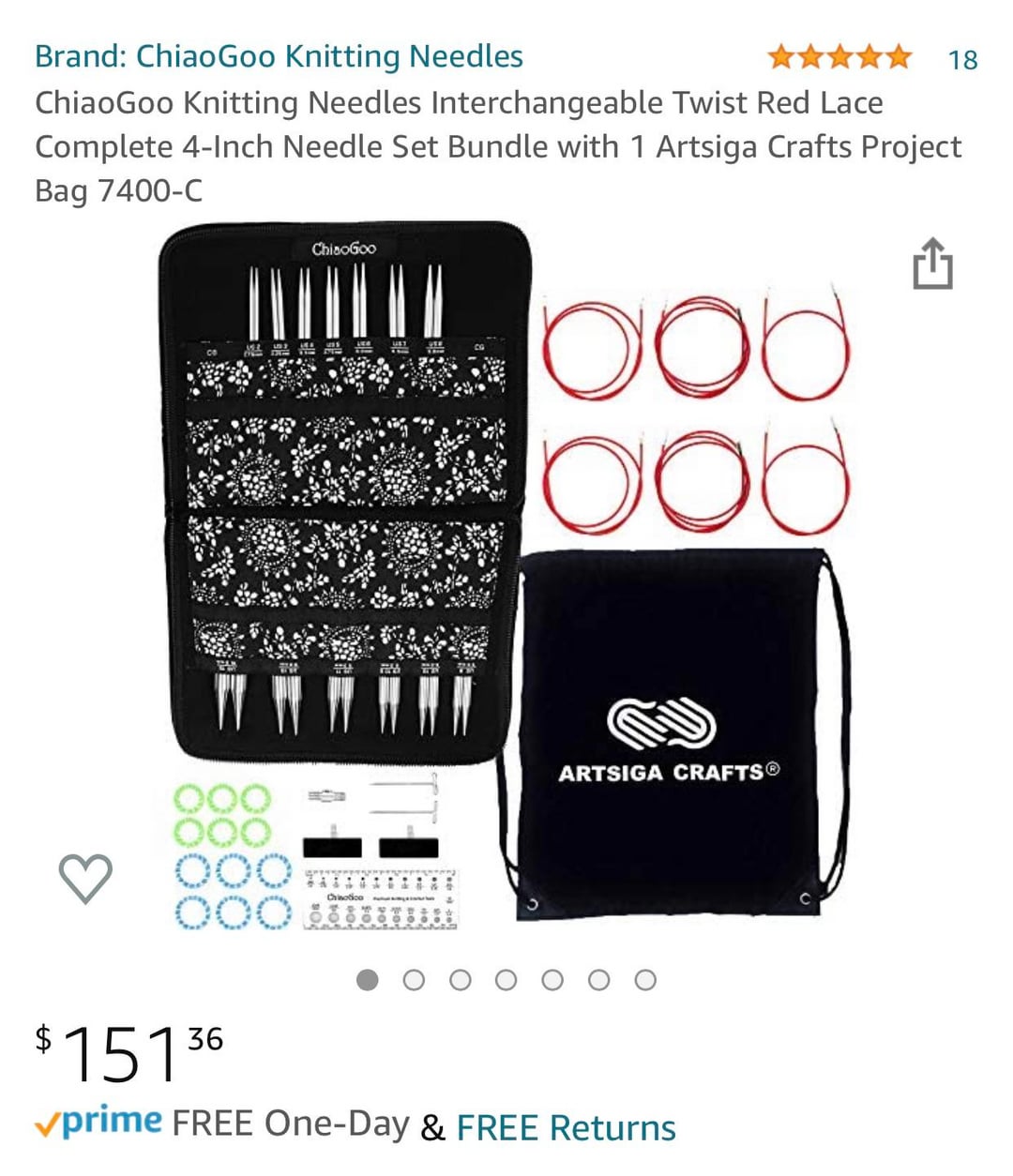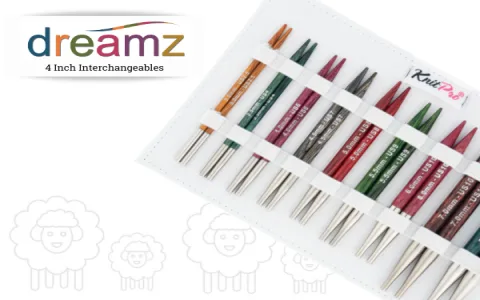Man, let me tell you, I have been wrestling with this review for months now. Every single time I sat down to write about the Dreaming Needles set, I started thinking about the cost again, and honestly, it made my stomach hurt a little. These things are not cheap. They are the kind of investment that makes you hide the receipt from your spouse and then pretend you won them in some contest. But I finally cracked, and I bought the full interchangeable set—the whole shebang.
The Pre-Purchase Trauma: Why I Finally Caved
For years, I stubbornly used the cheap stuff. You know the brands—the ones where the cables constantly unwind, the metal is thin and scratches your expensive yarn, and the joints snag every single stitch. I kept telling myself, “A needle is a needle, it just holds the yarn.” I resisted the hype, I fought the financial commitment, but then came The Great Christmas Sweater Disaster of 2022.
I was racing to finish a custom-dyed wool sweater. This wool alone cost me a fortune, right? I was maybe three-quarters done when the cheap plastic cable on my size 7 snapped clean off at the joint. Snapped. Lost maybe five hours fixing the dropped stitches and salvaging the project, and in that moment, I realized: I was saving fifty bucks on the tools only to constantly risk ruining three hundred bucks worth of material and countless hours of my life. That was the day I marched myself online and ordered the Dreaming Needles.

Unboxing and The Initial Shock
The first thing you do when you spend this much on a craft tool is you examine the box. I ripped open the shipping packaging and immediately felt the weight of the case. It wasn’t some cheap cardboard or plastic zipper pouch; it was a substantial, leather-bound thing. I opened it up, and the needles were laid out perfectly. It sounds stupid, but just seeing them arranged made me feel like a professional surgeon getting ready for an operation, not just a person making a scarf.
- I immediately pulled out the US 8s (5.0 mm), which is my workhorse size.
- I gripped the body. They feel different. They are dense, heavier than aluminum, but somehow perfectly balanced. They have a slight warmth to them that cheap steel needles never manage.
- I tested the tips. This is where the magic starts. They taper to a perfect, slightly blunt-but-sharp point. Sharp enough to get into tight stitches, but not so sharp that they split the yarn fiber every single time you push through.
Putting Them Through the Wringer: The Test Projects
I didn’t baby these things. If they were going to cost this much, they had to perform under pressure. I started two major test projects immediately. I needed variety in yarn and technique.
Project One: The Lace Shawl (Fingering Weight and Tiny Needles)
I grabbed a size US 2 (2.75 mm) and some notoriously grabby, slightly fuzzy alpaca yarn. This yarn hates smooth needles, and the small needle size always tests the quality of the joint connection.
I knitted for hours, doing complicated yo-k2tog sequences. I was trying to make the cable attachment snag, just once. I pulled the stitches back and forth over the joint repeatedly. And nothing. It just glided. The connection, which they claim is their secret sauce, felt absolutely seamless. It was like the cable and the needle were one single piece of metal. I stopped swearing at my tools for the first time in forever.
Project Two: The Chunky Fisherman’s Rib (Bulky Yarn and Big Needles)
Next up, I slapped on the size US 11s (8.0 mm) and some thick, rough acrylic-wool blend. This tests the grip and the weight distribution. When you use huge needles, they tend to feel clunky and heavy, especially at the tip.
I pushed through thick rows of ribbing. The density of the Dreaming Needles meant they didn’t flex or bend under the pressure of the bulky yarn. My hands didn’t cramp up as quickly as they usually did with the cheap plastic versions. I could actually feel the power transfer from my wrist to the stitch with much less effort.
The Verdict: Are They Worth the Gut-Wrenching Price Tag?
Yes. Look, I’m not going to lie and say the price isn’t outrageous. It is. But I have realized something important through this whole process: When you invest in the best tools, you are not just buying metal; you are buying time, peace of mind, and frustration mitigation.
I used to spend 10% of my knitting time struggling with faulty equipment—tightening cables, fixing snags, picking up dropped stitches from unexpected breaks. That 10% is now spent actually knitting. The quality of my finished objects has gone up because the process is smoother, and frankly, I enjoy the hobby more because I’m not fighting my materials.
Here’s the breakdown of why they stuck the landing:
- Joints: Completely snag-free. They are butter smooth.
- Tips: Perfect balance of sharp and rounded for handling all types of yarn textures.
- Cables: They don’t have that horrible memory coil. They hang straight and loose right out of the box.
So, should you liquidate your savings and buy them? Maybe not. But if you are serious about your craft, if you work with expensive materials, or if you simply cannot stand the constant frustration of cheap equipment breaking mid-project, then yes. They are a one-time, painful investment that will completely change how you approach knitting. They took me from stressed-out fighter to smooth operator, and that, my friends, is absolutely worth the high cost.






